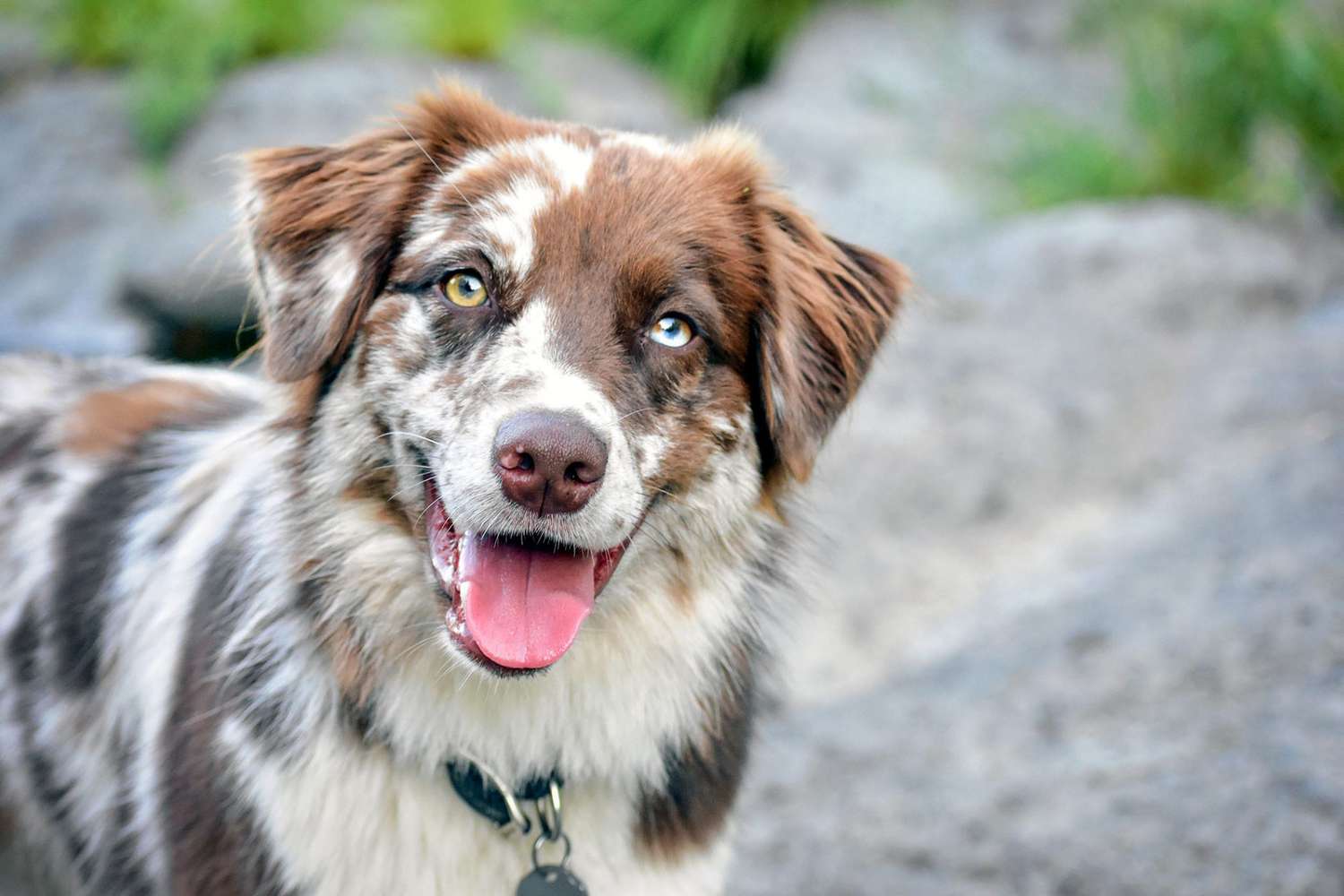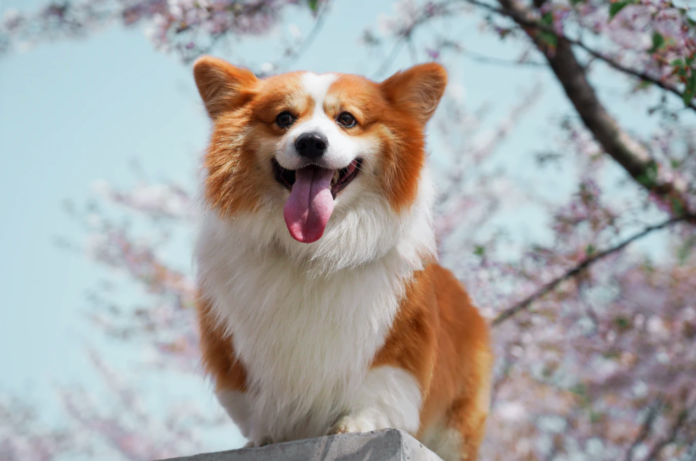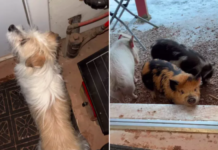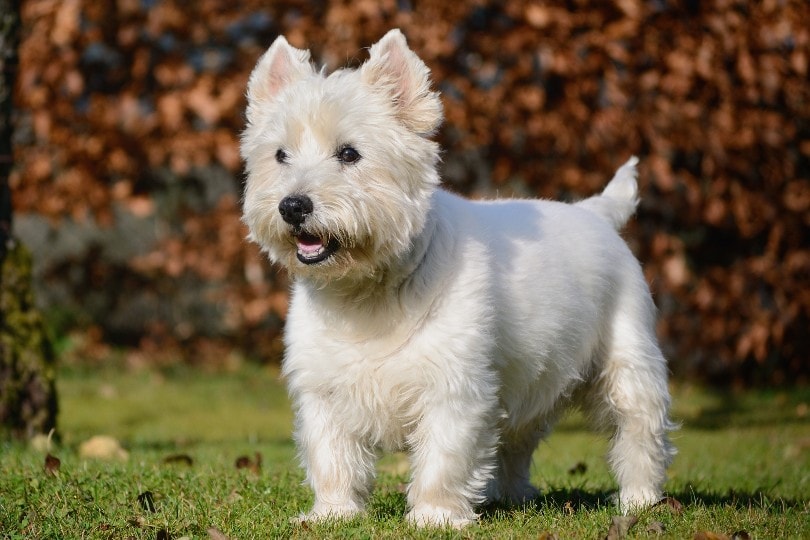Last Updated on July 2, 2021 by Fumipets
Because the Australian Shepherd Corgi Mix is a cross between two herding dog breeds, it has a strong desire to seek and herd prey. Both dogs have similar body shapes, with the exception of the Corgi’s short legs.
He does, however, have a strong physique and bone structure. Don’t be fooled by his little height! Although the Australian Shepherd is more obedient than the Corgi, both breeds are very clever, resulting in a hybrid that is clever as well.
Let’s explore all there is to know about both parent breeds so we can better understand the mix.

Australian Sheperd
The Australian Shepherd is a herding breed, however, despite his name he is not an Australian breed. This dog actually hails from the United States of America.
He was derived from dogs brought to the American West by Basques from the Pyrenees area of Spain.
Although the exact roots of their name are unknown, it is thought that the Australian immigrants who worked with these dogs for sheep herding gave them their name. They were, nevertheless, utilised in the American West to herd livestock.
Ranchers in the Western United States’ upper areas, such as the Rocky Mountain area, have had great success with the dogs and discovered that they thrive in the dry, thin air of the area, even at high elevations.
The Australian Shepherd acquired prominence via the rodeo circuit and television appearances. They eventually became a popular breed and have shown to be naturally bright and obedient dogs.

Personality Traits
The Australian Shepherd is a cheerful dog with a positive temperament. They treat work as if it were a game. They form strong bonds with their caregivers. This dog breed is devoted, loving, and eager to accompany you wherever you go.
They like to spend time with their owners and are wary of strangers, however they are not known to be aggressive.
Because they are a herding breed, they like to remain together and are a dog that can be kept without a leash, unlike a hound that would bolt after smelling anything. The Aussie will keep their eyes on you at all times and keep you in their sights.
They make great herding dogs and watchdogs. When anything is out of order, they will bark, and they do not appreciate things that are out of order. If you allow them, they will herd the youngsters, ducks, lambs, and cattle.
They could even attempt to herd the vacuum cleaner or lawn mower. They have a more substantial build than border collies and have herding tendencies that are comparable.
This dog needs a lot of activity else it will get bored quickly. They’re very brilliant and need mental stimulation. The Australian Shepherd is well aware of his intelligence and will use any opportunity to demonstrate it.
If they are well-socialized and trained, they would not to nip at children and other smaller animals in the home, they are nice with children and other pets. Many herding breed dogs have a natural propensity to nip, but they may be trained not to do so. It’s critical that you start working on this right away.
Australian Shepherds are known for being very obedient. They aren’t known for being a difficult breed. They have a strong desire to satisfy others.
As a result, they excel in both basic and advanced obedience skills. They’re used as assistance dogs, competitive dance partners, agility dogs, search and rescue dogs, and even seeing eye dogs.
Caring for the Australian Sheperd
The Australian Shepherd has a thick coat that requires continuous care and combing. It serves as a protective barrier on their body, preventing objects in their surroundings from accessing their skin.
It’s notably bushy on their backs, which are likewise devoid of a tail. This prevents livestock from nipping and grabbing you. It’s a natural cushion.
Working dog lines, which have more of a wave or curl in their hair, may have a somewhat different coat than show dog lines. This bothers show dog breeders, who prefer dogs with straighter coats.
Working dog lines may be a little bigger, weighing in about 65 pounds plus or less.
As a result, if you dislike brushing dogs or shedding, this may not be the breed for you. They need to be groomed on a regular basis, and they shed a lot in the spring and a little all year.
You’ll need to teach your Aussie such that they’re always under your command. Because they are a rather hefty dog, classified as a medium to big breed, it is critical that they do not tug on a leash.
Once he’s beyond puppy teething, the Australian Shepherd isn’t noted for being an excessive chewer. They are a wonderful dog that can adjust to any living circumstance if their activity demands are met.
If this breed isn’t exercised and exhausted enough, it might develop anxiety difficulties. They like running around and rough play. After all, they were raised to herd cattle and sheep. They are used to a little jostling.
They won’t be hole-diggers, barkers, or worse if they have lots of mental and physical activity. They are quiet and inquisitive dogs that are rock solid and obedient with enough of supervision and training.
Make sure you give them a balanced diet, brush their teeth with a dog-specific toothpaste, and keep them hydrated at all times. Their coat protects them from the sun in the summer and keeps them warm in the winter.
They are not meant to be shaved in the summer, and this might result in sunburn.
If they’re groomed properly, they’ll get a nice blow-out and a trim on their backsides and the backs of their legs, where they have feathering to protect sand spurs and thistles from entering their skin while working.
If they’re a working dog or you’ve been hiking trails, check their feet often.
While they aren’t known to be prone to ear infections, you should examine their ears on a weekly basis to ensure that they are clean and odour free. A foul odour in the ear might suggest a yeast infection, and a black tar-like material might suggest mites. Keep your eyes peeled for them.
The dog doesn’t have a tail, yet his behind is covered with fur. You’ll want to maintain him well-trimmed so that nothing gets lodged in his fur after bowel movements and his bottom remains clean.
Brush this region every day and keep an eye on it. Anything that sticks can produce matting, which may be difficult to remove and may need cutting out.
Overall, the Australian Shepherd is a wonderful, clever, loyal, and loving dog. They like playing and working hard, and they seem to be amusing.
You’ll find yourself grinning at their antics and excitement for life. Aussies have a lot of smiles and will make you grin as well.
The Corgi
This is another herding breed dog whose roots are so obscure that no one knows for sure. The Corgi, which has been shown in very ancient works of art, is a popular sheep herder in Europe and was a favourite breed of the present Queen of England, who was a Corgi breeder until recently.
Corgis are a lively, clever dog with a strong spirit and a mind of their own. This serves them well the majority of the time, and it results in a personality that is adored by their owners. They are aggressive and competitive.
Corgis like nothing more than running after a ball with other dogs they can outrun.
Don’t let their little legs deceive you; the Corgi is a fast-moving tiny dog with a robust body that makes them highly tough. They’re not going to be bullied. They have a lot to prove as a smaller dog in the herding dog family, and they almost appear to have a natural desire to be first, top finisher, and winner, even if the aim is to out-eat their brothers. As a result, they make great working dogs for farmers with flocks to look after.

Personality Characteristics of Corgis
We’ve previously discussed some of this breed’s characteristics. They have an opinion on almost everything and aren’t hesitant to express it. The Corgi is a tenacious dog that enjoys a good chase or a game of fetch.
They must be exercised or they will get naughty. If bored and/or untrained, corgis are prone to excessive barking.
You should teach them not to bark from the time they are little, or they will become the dog that runs to the front door and makes a tremendous commotion whenever you have a visitor.
On the other hand, the Corgi makes a superb watchdog and will alert you if something is out of the ordinary. They have a good sense of hearing and smell and are attentive. They are a courageous small dog that will engage in combat with raccoons, opossums, and maybe a bobcat if given the opportunity.
This might be a fantastic reason to teach them to obey (at least as obedient as a Corgi will be). Don’t get us wrong: they’re fantastic pets. They just have a proclivity for doing things their way.
If you don’t show them early on that you’re in command, they’ll quickly take over and empower themselves to make executive decisions on your behalf, such as who gets to walk in the front door and what to bark at in the courtyard.
Children and attention are two things that Corgis appreciate. If there are kids to play and run with, they will play all day. Be wary of nipping, which is a common herding dog habit. They try to control the direction of the animals they are tasked with herding by nipping.
They often seek to herd youngsters and, if not restrained at an early age, may nip flesh and cause bleeding.
Having a trainer assist you with these challenges is always a good idea. Begin working as soon as possible, and include kids in the training process so that they understand what causes a herding dog to bite at flailing arms and ankles.
Finally, do not abandon the dog or children. This is a really important matter. Children and dogs should never be left alone until they are old enough to be in total control of events and the dog has been properly trained.
The Corgi is also a ham, and as long as he’s receiving praise for being a goofy, he’ll keep being one. They like being the centre of attention and soon figure out what will bring them goodies. Any dog will repeat activities that benefit them, and Corgis are no exception.
In all honesty, herding breeds are among the most intellectual dog breeds on the planet. This is likely due to the fact that they must be able to think quickly and reason about what the herd could do before acting.
The capacity to predict the conduct of another animal is a cognitive capability that many people did not believe dogs were capable of.
Duke University has a department devoted to canine cognition, and they’ve shown that canines can think and plan. Herding dogs may have the ability of a five-year-old kid.
Caring for the Corgi
Corgis have a coat that resembles that of an Australian Shepherd. It’s thick, and it’s meant to block thistles, thorns, and other plants from piercing the flesh under it. It acts as a barrier against the heat in the summer and the cold in the winter.
A good brushing is necessary for a Corgi, and it is ideal to do it once a day.
They shed heavily in the spring, but are known to shed a bit year-round, so if you have allergies or dislike dog hair, a Corgi or a it’s mix is not for you. Unless you are willing to clean and vacuum on a regular basis, you will have hair drifting throughout your home and piles of fur beneath beds and couches.
Take note of his teeth. The Corgi is more likely than the Australian Shepherd to chew on toys, so he’ll need some bones or other hard chews to keep his teeth clean and healthy.
Soft diet and dental care are required for an elderly dog with terrible teeth that needs extraction. However, this may be prevented.
If your dog doesn’t chew much, you may need to scrape tartar from his teeth to maintain them healthy. Brush his teeth with enzymatic, fluoride-free toothpaste made specifically for dogs. Fluoride is harmful to dogs, so be cautious while using it.
A Corgi that hasn’t been properly taught might become an out-of-control barker. He receives sufficient training as part of his treatment. If you’re not sure where to start, hire a trainer or enrol in group sessions to help socialise your dog. A Corgi that has been socialised is a better behaved Corgi.
Corgis come in two varieties; the Pembroke Welsh Corgi and the Cardigan Welsh Corgi.
The Pembroke, which has no tail, is the most popular. They, like the Australian Shepherd, are usually born without a tail, however a pup may have a bobbed tail that is too long or be born with a complete tail that will be bobbed at the vet clinic.
If they are able, some breeders will conduct their own tail bobbing. It’s usually done within 48 hours after giving delivery. Puppies are claimed to have yet to establish nerve tissue all the way to the end of their tails and feel little to nothing if done during the first 48 hours of birth.
You should give your Corgi a high-protein, lean meal derived from a high-quality meat source. They have a lot of energy and need a high-quality diet to keep them satisfied.
However, the Corgi may get overweight as they get older, and if you allow them, they will become a couch potato. Being overweight is particularly difficult for them since they are long dogs.
You’ll want to keep an eye on your Corgi or Corgi mix to make sure it doesn’t get too heavy. Back discomfort and slipping or burst discs might occur as a result of this. This is significantly less likely to be a problem for you or your dog if they stay active and eat properly.
Potential Health Issues of Both Breeds
There are various health problems with both breeds that you should be aware of:
Australian Shepherd
Merle-colored Australian Shepherds should never be bred together. A dog with the merle gene from both parents will be deaf or blind, and in some circumstances, both. These are known as fatal white puppies and are usually culled (humanely killed) shortly after birth.
These are known as fatal white puppies and are usually culled (humanely killed) shortly after birth.
Cataracts are a development on the cornea that results in a progressive loss of eyesight. Surgical intervention may be used to treat this.
Hip dysplasia is a disorder in which the femur does not sit correctly in the hip joint. It floats in and out of the joint, producing pain and discomfort. Ligament stress, arthritis, and long-term joint damage are all possible consequences. Surgery is required in extreme situations to prevent a dog from becoming permanently lame.
Epilepsy is a seizure disorder that may need medication. This is a genetically carried characteristic, and though breeders want to avoid breeding dogs with a history of epilepsy, many backyard breeders continue to do so, breeding merles for prettier whiter puppies.
IVERMECTIN SHOULD NEVER BE GIVEN TO HERDING DOGS, as it has been known to cause seizures and death in collies and other herding dogs. Typically, breeders would advise all puppy adopters to never feed it to their puppies.
The Corgi
Hip dysplasia is a joint problem that affects several breeds and may range from mild to severe. A veterinarian will assess the joint’s condition and provide suggestions ranging from pain relief to surgical intervention.
Von Willebrand’s disease is a treatable illness that is handed down down the generations in Corgis. It may need a blood transfusion and continued therapy to overcome the illness, but the dog is not doomed. Gum bleeding and profuse bleeding following heat cycles are signs of this condition.
Gum bleeding and profuse bleeding following heat cycles are signs of this condition.
Degenerative myelopathy is a disorder in which the tissues that give support in the region of the spine deteriorate. It is a severe and progressive condition. It is quite painful right away and might result in complete paralysis of the rear limbs.
Intervertebral disc disease is the herniated and bulging discs mentioned before. Take care of your Corgi’s back and don’t allow him get overweight. If your Corgi refuses to jump or walk up and down stairs, he may be exhibiting early warning symptoms, and you should take him to the vet.
Epilepsy is a disorder that is often handed down the generations. This illness affects a wide range of breeds and, if left untreated, may be fatal. However, many animals react favourably to therapy. If you fear your dog has had a seizure, take him to the vet right away.
Cutaneous Asthenia is a disorder that causes the skin to seem fragile and lack suppleness. The dog’s skin may seem to sag and bruise readily. They may also bleed readily. It’s also knowns as Ehlers-Danlos Syndrome.
It may cause the dog a lot of discomfort and annoyance. It is most often an issue in male dogs.
Patent Ductus Arteriosus is a congenital condition that may be rectified if your veterinarian discovers it during an examination. It causes unoxygenated blood to skip the lungs, resulting in hypertension. It is, once again, completely correctable by surgery.
Cataracts occur when an opaque film forms across the cornea, resulting in blindness and visual problems. The cataract may be surgically removed to fix this. Prognosis for vision is also excellent.
IVERMECTIN SHOULD NEVER BE GIVEN TO A CORGI.
The Australian Shepherd Corgi Mix
When a first generation mix of purebred parents produces puppies, the puppies have a 50/50 chance of looking like either parent or being an equal mix of both. When two recessive genes are transferred, the puppy may have a different appearance than either parent.
These dogs are usually short-legged, like the Corgi, and have the colouring of an Australian Shepherd, which might be black and white, black-tricolor, red-tricolor, red and white, red and white, red merle, or blue merle.
The desire to herd will most likely be high in both breeds since they are herding dogs. Because they’ve been bred to labour less and display more, show dog lines are less likely to have a strong urge to herd.
Some dogs descended from working dog lines will have a strong urge to herd. From the time they are little, they will keep toys together on the floor and will likely engage in nipping and chasing activities.
It’s critical that you begin working with these pups as soon as they arrive at your house. It’s never too early to start training. If you’re not sure where to begin, engage a professional trainer to come to your house and guide you through the process. They’ll show you how to rectify the behaviour and redirect it in a positive way.
Herding dogs, like your Aussie Corgi mix, are very clever. He’ll have a smart intellect and pick up on everything you take the time to educate him fast. These dogs are fantastic in agility, frisbee, flyball, and other dog sports. These dogs will flourish with you if you are an active person or have an active family and lifestyle.

What To Expect From Your Mix
These dogs are faithful to the end, as well as kind and affectionate. Both dogs will stick by your side through thick and thin, ready to help you with anything you need. When given the option, they would rather be with you. Herding dogs form strong bonds with their group and see you as one of them.
Expect your herding dog to not be lazy and lounge about the house all day without doing anything. They need to be active, and if they don’t get enough play time, they’ll become destructive.
While the Australian Shepherd isn’t a barker, the Corgi can be. If your puppy starts barking excessively, you should deal with him as soon as possible. It may quickly escalate into a continuous nuisance that your neighbours will dislike, particularly if you live in an apartment complex.
As long as you are consistent, herding dogs will learn to walk on a leash with ease. It’s very vital to teach smart dogs consistently. If you aren’t consistent, they will see your flaws and take advantage of them.
They can’t help themselves; it’s in their DNA. They herd animals by identifying their weak places and using their fear to move them.
It’s a given that they’ll figure you out quicker than you can teach them. When it comes to lifespan, you may anticipate a healthy dog to live around 12-15 years. They will be active for the bulk of their lives, yet as they become older, they will slow down.
They may lose their hearing and their vision as they get older. They’re quite versatile and will figure out how to go about if you assist them. They are robust and flexible, and they seldom give up. They’re cheerful little dogs, but they’re not for the faint of heart.

Reasons to Avoid an Australian Shepherd Corgi Mix
They may be at a high risk of inheriting a potentially life-threatening condition that would need costly surgery or long-term care.
Because the genetics are so difficult to defeat, nipping is difficult to train out of this mix. Herding dogs are tough to have if you have children since they get nipped. If you have very little children, you should not have a herding dog unless you are extremely familiar with them.
For a first-time dog owner, this may not be the right mix. Both breeds are intelligent and the Corgi may be stubborn. If you’ve never owned a dog before, you may want to start with a breed that’s a little simpler to understand.
High levels of physical activity are required. This dog will go nuts and drive you crazy if you live in an apartment and are not an active person. He’ll be bouncing off the walls, and you’ll be blaming yourself for your choices.
Lack of outside running area would be a deal breaker for this dog. They won’t be happy or healthy if they can’t run. If they’re unhappy, they’ll chew your shoes and engage in other mischief, prompting you to call a trainer for assistance very quickly.
They are intelligent and loyal, but they can also be a challenge, and only you can decide whether you are up to the task. Ask a lot of questions while speaking with a breeder. Before you go, talk to the trainers. If you’ve decided that you really must have an Aussie Corgi mix, find out what you can do to get started successfully.
Whatever you decide, keep in mind that when you bring that puppy home, you’re making a 12- to 15-year commitment. It’s everything about health, food, basic requirements, and training, and it may be worse than bringing home a baby since, at least for the first few months, a baby lies where you put it. From the first day on, a puppy will be involved in everything.
Make sure you’re prepared, and if none of the drawbacks stop you, we wish you many years of love and pleasure with your Aussie Corgi mix. Enjoy them and look after them, and they will be a valuable member of your family for many years.


















